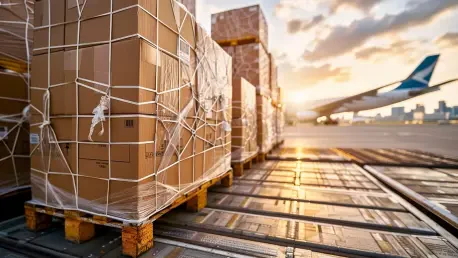In recent developments, a notable surge in air cargo demand has been recorded, primarily spurred by businesses scrambling to preemptively transport goods to circumvent potential U.S. tariffs. According to data from the International Air Transport Association (IATA), in March, air cargo demand grew by an impressive 4.4% year-on-year, reaching unprecedented levels for the month and marking a sharp rebound from February’s slight decrease. The situation has been largely influenced by companies stockpiling in anticipation of looming tariff announcements, coupled with the advantage of lower fuel prices, thereby affecting the air cargo market’s short-term movements. This spike in demand has not occurred in isolation but reflects the broader, more complex trade dynamics influenced by geopolitical tensions and economic fluctuations.
Regional and Trade Lane Dynamics
Regionally, differences in air cargo demand have been distinctly observed, with varied reactions from major global players. The Asia Pacific region emerged at the forefront with airlines seeing a 9.6% increase in cargo traffic. Close behind, North American airlines posted a 9.5% rise. On the flip side, more challenging conditions were recorded in other regions, notably the Middle East, which saw a decrease of 3.2% in cargo demand. The drop was even more pronounced for African airlines, which experienced a steep decline of 13.4%. The Europe-North America route stood out as the most active trade lane, reflecting a robust exchange across the Atlantic. Additionally, the thriving growth in the Asia-North America route has been attributed to increasing concerns over tariffs, with companies keen to move goods swiftly before any restrictive measures take effect. This regional and trade lane data underscores a multifaceted global response to changing economic conditions and strategic business maneuvers.
Economic Implications and Future Considerations
Beyond the immediate logistics of air cargo movement, these activities shed light on pressing economic concerns. The ongoing tariff discussions have not only fueled rapid imports, which pushed the U.S. trade deficit to new highs, but have also rippled through various economic indicators. Inflation rates show varied trends across different regions, notably with China’s deflation easing slightly, reflecting the wider economic malaise and adjustments. As uncertainties loom over tariff implementation schedules, IATA, among other organizations, has called for political leaders to champion the stabilization of trade agreements. The intricacies of these economic implications highlight the delicate balance required to navigate through differing regional and global interests in trade. As demand patterns evolve, stakeholders in the air cargo sector must remain vigilant and adaptable, responding to potential policy shifts and economic signals to sustain growth and efficiency in an ever-changing global landscape.








